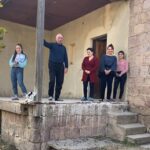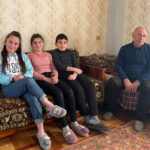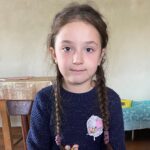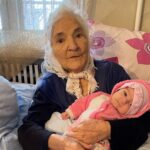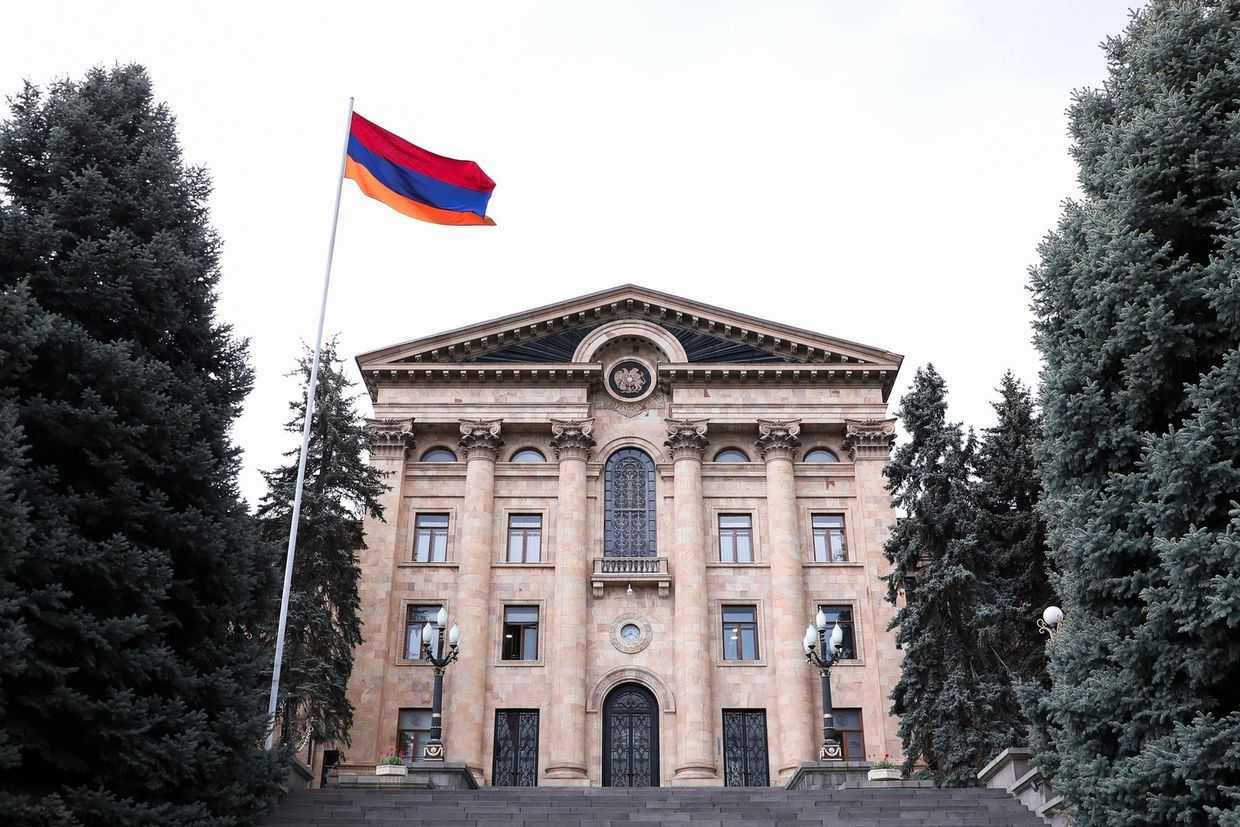
Over 100,000 people have been displaced in Nagorno-Karabakh during and after the latest fighting. Those who have found themselves in Armenia describe the solidarity and the suffering that dislocation has brought to their lives.
While sipping sea buckthorn tea at a popular cafe in downtown Yerevan, 28-year-old Stepanakert resident Irina Safaryan recalls the day before all hell broke loose.
‘That evening we were celebrating the engagement of one of our Diasporan-Armenian friends in a popular pub called Bardak,’ recalls Irina. ‘None of the pubs in Yerevan can beat that place.’
The next morning, Irina and her sister, who was visiting from Yerevan with her baby, were awoken by ‘the deafening sound of an explosion’.
‘I opened the window and it looked like the scene from the film Pearl Harbour,’ Irina recalled. ‘I told my sister to quickly get her things and we went to an underground shelter. Several hours later, I came out to quickly post about what was happening on social media.’
It was the first day of the 2020 war between Armenia and Azerbaijan over Nagorno-Karabakh. The war, which lasted for 44 days, has left thousands dead and tens of thousands displaced.
Born in a bunker during the first Nagorno-Karabakh war in the early 1990s, and having grown up in the city of Hadrut in the region’s south, Irina’s life was intertwined with the conflict, but even she did not imagine the ferocity of the fighting this time.
‘We felt something was brewing,’ she said. ‘But we never imagined that cities, civilian settlements would be shelled. We thought it would take place on the frontline just like the April War in 2016. For 30 years, Stepanakert and other cities [of Nagorno-Karabakh] had not seen war.’
Irina sent her sister and niece back to Yerevan that same day, though she herself decided to stay. She worked primarily at the Stepanakert press centre and helped to coordinate volunteer efforts in the city. Her grandparents and mother had already left several days before.
A little over a week later, on 6 October, Irina decided to leave herself — the war had taken both a physical and emotional toll. Though she had hoped to return soon.
The only immediate family to stay in Nagorno-Karabakh was her father. He remained in his hometown of Hadrut but left as Azerbaijani forces advanced on the city.
After the trilateral peace declaration that ended the war was signed by Armenia, Azerbaijan, and Russia on 10 November, Irina was faced with the fact that Hadrut and their family home there was now under Azerbaijani control and that she would likely never return.
Irina, who is back in Stepanakert, when asked what her and her family’s plans for the future were, responded that the future was something she could not talk about now. ‘I have nothing to say,’ she said.
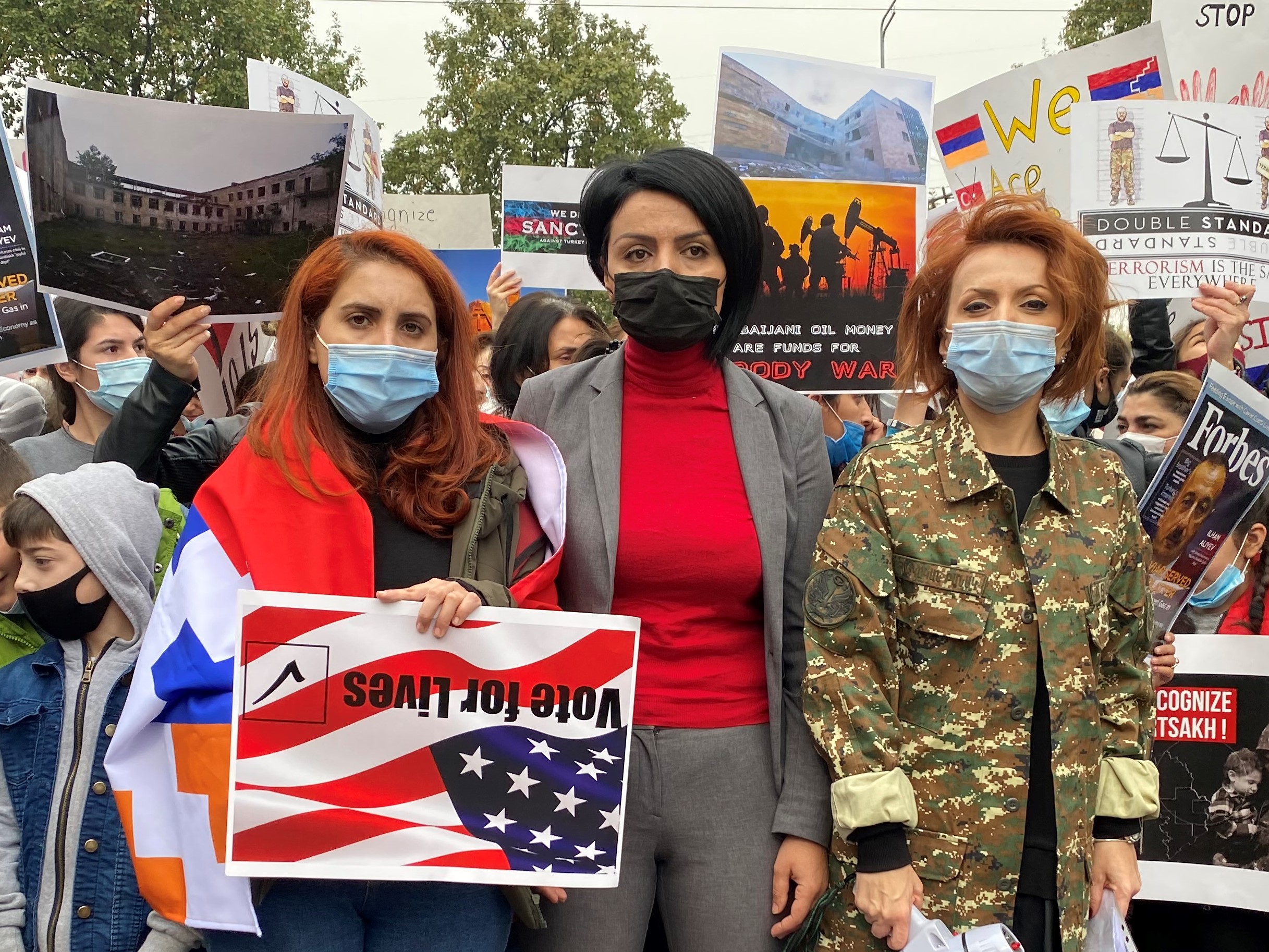
Volunteering
According to Nagorno-Karabakh officials, over 100,000 people — 70% of the region’s population — were displaced during the war and had to seek shelter in Armenia. Another 40,000 were displaced after the war ended, as residents of regions that now fall under Azerbaijan’s control fled. As of 23 November, nearly 25,000 have returned.
When the war began, aid for those streaming into Armenia was provided by a patchwork of different volunteer initiatives and non-governmental organisations. The Ministry of Labour and Social Affair soon took over, helping to coordinate the countrywide efforts as well as providing basic social, medical, and psychological aid alongside housing services.
The volunteer efforts came from all corners of Armenian society. Art studios, museums, and theatres offered free classes and shows for displaced children; private dental clinics offered free dental care; and many opened the doors of their homes to take in families who found themselves without one.
One group of four young volunteers from the small village of Mughni, near the city of Ashtarak, took it upon themselves to house and take care of nearly 170 refugees from Nagorno-Karabakh staying in their village.
‘It all started when we put donation boxes in downtown Ashtarak for our soldiers,’ says 16-year-old Marianna Torosyan, the youngest of the volunteers. ‘Soon people were asking if we can help house refugees as well.’
Marianna and the three other volunteers have become the breadwinners for the children and women staying in their village, and many of the displaced treat them like family.
They continuously collect donations and have a warehouse full of food and medicine for the families they help. They were able to find a donor from Canada who bought new clothes for all the displaced children. They found numerous homes within their village the owners of which were either not in the country or had other homes as well.
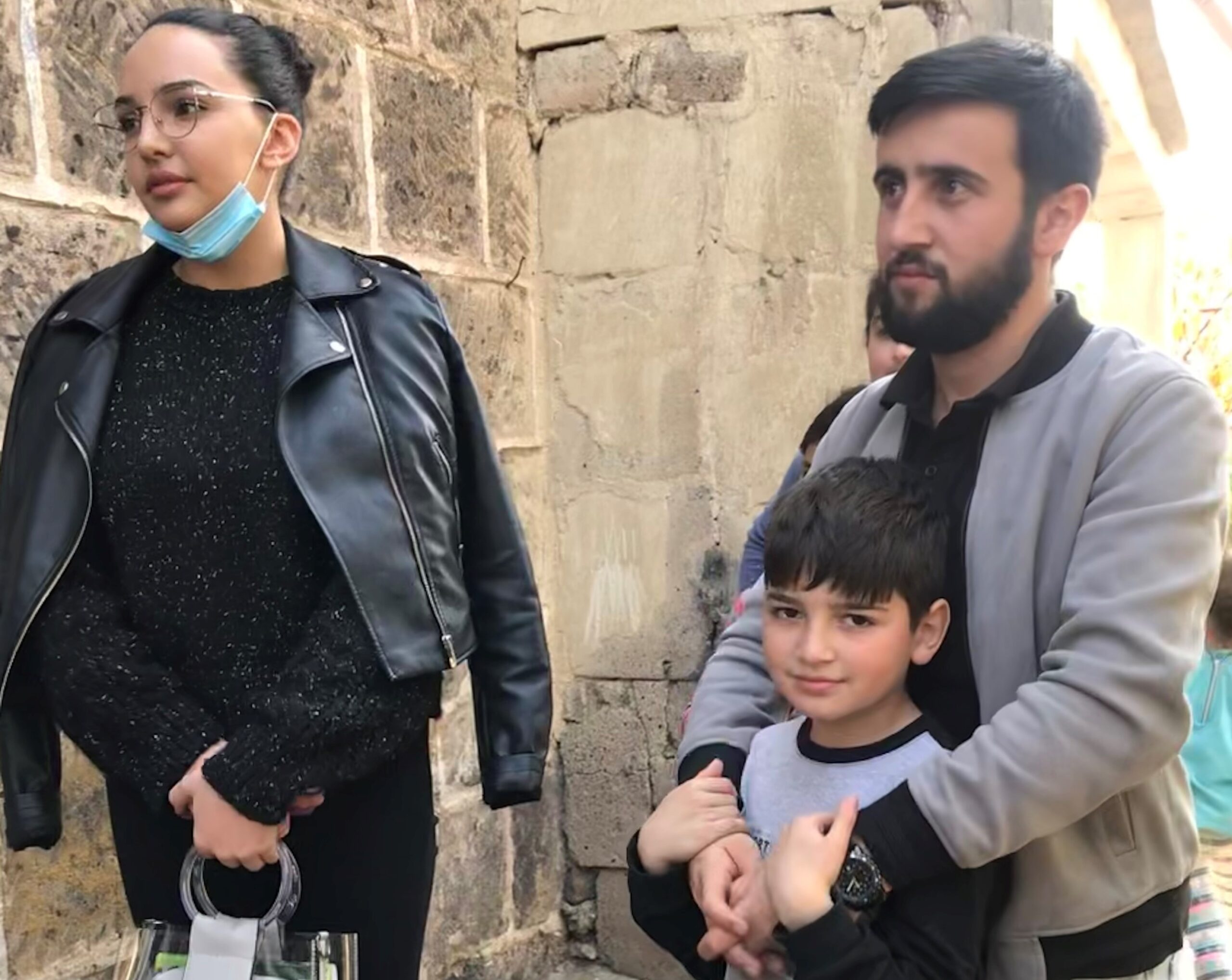
Four families and one house
The first people they helped find a house for were four families from the Martuni region. There are now twenty people living in a two-story house — 15 children aged between 4–14 and five adults.
All the men from these families stayed to fight on the frontlines.
On the day we spoke with them, upon entering the front gates to the house, several children ran up to Marianna and Artyom — a friend and co-volunteer — and took turns hugging them.
‘Who do you like more? Me or Manan [Marianna]?’ Artyom asked.
‘We like both of you!’ the kids cheerfully exclaimed.
Trying to find a quiet place in the large garden so the children would not interrupt her, one of the adults, 49-year-old Narine Arzumyan, immediately started expressing their gratitude toward the volunteers and the village in general.
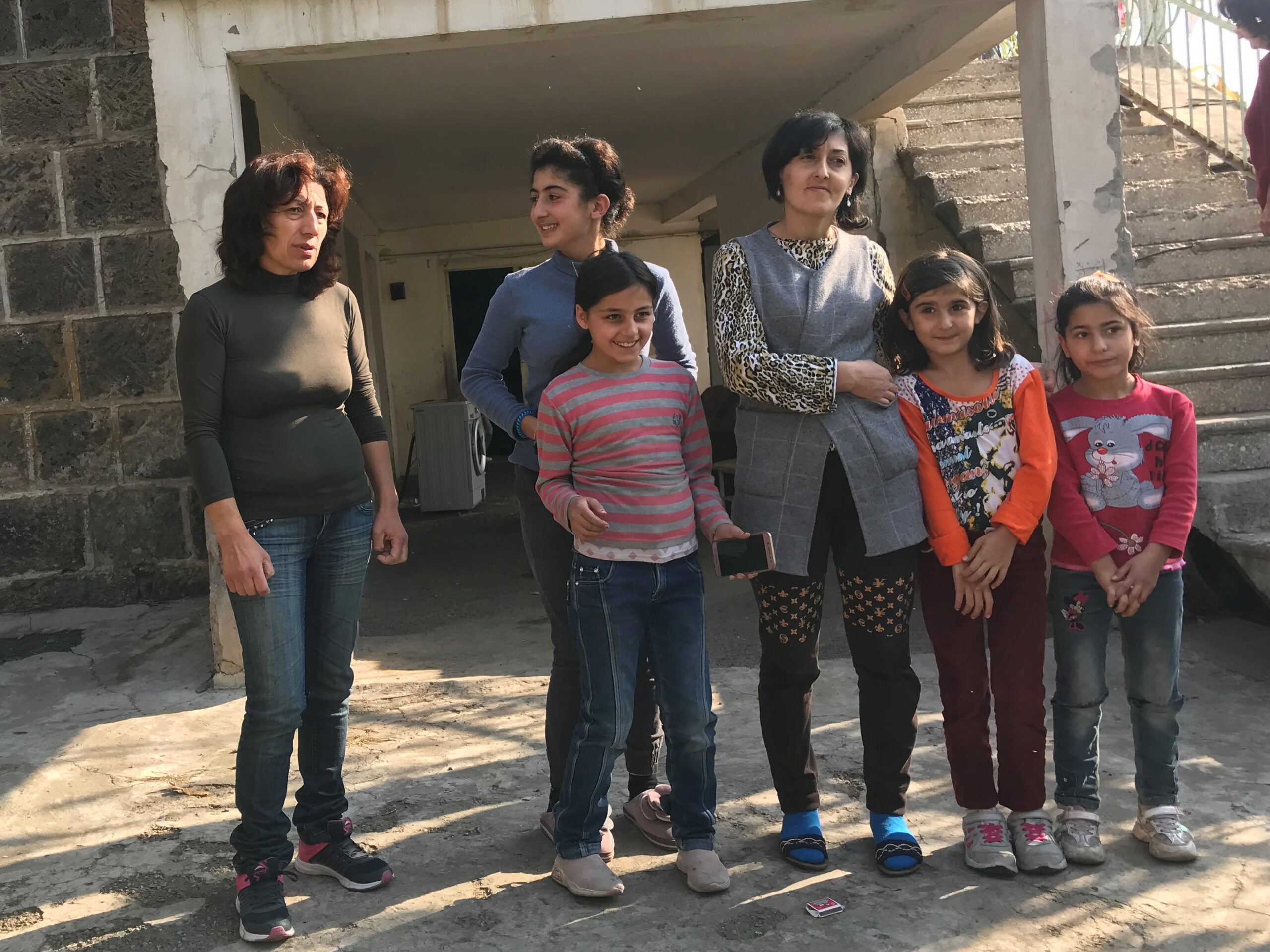
Narine left their village of Yemishjyan with her four children along with her neighbour and six children on 1 October. ‘We thought it would end soon so we were staying in our underground shelter’, Narine said. ‘But since the children were getting scared, we decided to leave. We have now found this wonderful place in Mughni.’
Narine has been overwhelmed with the support their families have received. She says that because of the help, they are in need of nothing. Even the recent COVID-19 school closures haven’t affected the children so much, she says.
While living in their temporary new home, Marianna and her volunteer friends have periodically taken the children to museums and the zoo and a teacher would come several times a week to work with them so they would not fall behind in their studies.
On 5 October, several of the children staying in Mughni were baptised, with the volunteers becoming their godparents.
Now with the war over, three of the four families have returned, while Narine has stayed, now joined by her husband. They told me there were too many ‘uncertainties’ in Nagorno-Karabakh for now but, eventually, they would return.
The Poghosyans
Another family to find shelter in Mughni are the Poghosyans — Zhora and Valentina Poghosyan with their two daughters-in-law, Lilit and Ruzanna, and their five grandchildren.
Zhora brought them and other relatives and neighbours —a total of 25 people — in a single trip in his Ford Transit van, from which he had the seats removed in order to squeeze everyone in.
His two sons stayed behind to fight.
The Poghosyan family is from the village of Togh, near Hadrut. Soon after Hadrut was captured, Lilit learned that their house had been burned to the ground.
‘What’s happening in Nagorno-Karabakh is a massacre,’ she told me the week before the peace declaration was signed. ‘This war is different. This time the drones made the war different. Our shelters couldn’t help much. That first day we were hit by UAVs, we constantly saw them in the sky.’
‘We’re hearing news about beheadings, and now the phosphorus fires. It’s inhumane’, Ruzanna chimed in. ‘We would never want their [Azerbaijan’s] children and elderly to go through what we’re going through’.
‘We’ve left our hearts there’ she said, adding that they left for the sake of the children.
When I asked the children what they missed the most, nearly all said their fathers, except 4-year-old Avet. He said he missed his rain boots the most. With Hadrut now outside of Armenian control, all of them have no home to go back to, and Avet will forever miss his rain boots.
Lilit’s and Ruzanna’s husbands have come to join them in Mughni, where they will stay for the time being. Ruzanna says they are now living in Armenia without hope. ‘I lost my native village, my home,’ she said. ‘I’m not making any decision to go back to Artsakh [Nagorno-Karabakh] because every inch of Artsakh is now a frontline. It is not safe there anymore for peaceful citizens’.
Stranded
Not all families from Nagorno-Karabakh were lucky in finding a decent home in Armenia.
Rima Petrosyan, a 23-year-old mother from the village of Askeran and her two children came to Armenia on 29 October. They were taken to a boarding school in the city of Vanadzor along with 100 others.
She said the conditions were ‘horrendous’. There was no hot water and no heating and her children’s bronchitis worsened.
Without any further help from the authorities, Rima started calling every acquaintance she had with hopes to find a new place to stay.
That’s when one acquaintance put her in touch with Marianna. There were no more houses left in Mughni, so Marianna offered her own family’s home. Rima and her two children had been staying there for the past two weeks.
Her son took his first steps in Mughni.
Rima’s story was similar to those of everyone else from Nagorno-Karabakh. Her husband, father and brother were on the frontlines.
‘Fear is in my heart,’ she said. ‘I just want to be reunited with my men.’
Since the war ended, Rima has returned home to Nagorno-Karabakh and has been reunited with her husband.
Coexistence
Now that the guns have fallen silent and some of those who were displaced have begun to return to Nagorno-Karabakh, a semblance of normalcy is returning. But for many, it is still far from peace — and none of the families we spoke to thought that co-existence with Azerbaijan was possible.
‘If there was ever a glimmer of hope before, this war just completely obliterated it,’ Irina Safaryan said. ‘I took part in peacebuilding initiatives for ten years and have met many Azerbaijanis. We cried together, fought with each other, had good times together. But, every time they went back they would delete me from their friend list and apologise. I was creating problems for them back home’.
Irina stopped believing in these peacebuilding initiatives after the first two she took part in. She now considers them a waste of money. ‘I saw my Azerbaijani friends celebrating the deaths of Armenians on social media. I’ve blocked them all. I believe they want to see Nagorno-Karabakh without Armenians’.
Narine Arzumyan, the mother of four from the village of Yemishjyan, said they had never lived peacefully with Azerbaijanis. ‘Only when I lived in Russia for a while were we friends with them and had no problems,’ she explained. ‘But I don’t believe that can happen in Karabakh. We’re like cats and dogs’.
Zhora Poghosyan explained that in the 1960s and 1970s he was relatively close with Azerbaijanis. ‘Our houses were next to each other,’ he said. ‘But now? No, not after all of this’.
The spinning wheel
Gyulvard grew up in Azerbaijani city of Sumgayit where she worked as a nurse. She said she lived peacefully with Azerbaijanis, until 1988. On 27 February violence erupted as anti-Armenian pogroms swept through the city.
She saw people dragged out of their homes and beaten, her brother was nearly killed. Indeed, she barely escaped death herself. When the angry mob arrived at her door, it was her Azerbaijani neighbour who held them off.
The family then fled Sumgayit and resettled in Karabakh, only for even greater violence to erupt. Her son would be one of the thousands to die in the first Nagorno-Karabakh war.
Now, 30 years later, it was her grandson who had gone to fight. ‘We keep seeing war’, she told me with a sigh. A history of violence repeating itself like a ‘spinning wheel.’
But she is not without hope. Before the peace declaration was signed, her granddaughter, Elmira, told me that Gyulvard had a vivid and prescient nightmare months before that war had broken out. The day we spoke with Elmira, ten days before the peace declaration came into force, she told me her grandmother had another vivid dream that night.
In the dream, Gyulvard was in a church, where she felt a voice tell her to light ten candles, and once she did the voice reassured her that now, finally, ‘peace will come’.
All place names and terminology used in this article are the words of the author alone, and may not necessarily reflect the views of OC Media’s editorial board.
